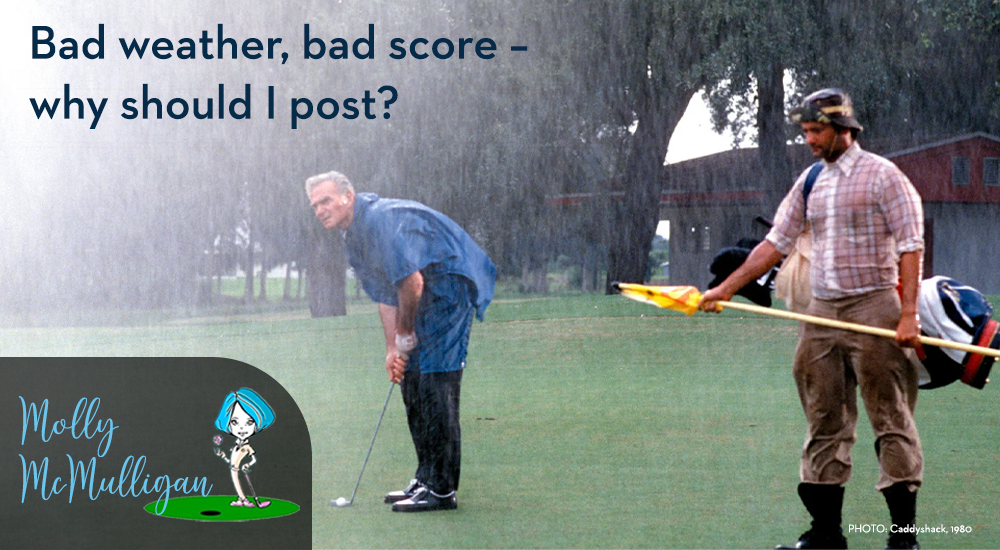I have a friend who doesn’t post scores that are unusually high after playing an unfamiliar course or in bad weather. I understand our highest scores don’t count toward our indexes, but I post everything. Who’s right?
That depends on how many scores are “unusually high,” doesn’t it? Posting only good scores gets us what’s known as a “vanity handicap,” an impressive number that we stand no chance of playing to in tournaments where someone’s watching us. So we can boast, but we usually cannot collect.
The World Handicap System adopted by the CGA via the USGA works at preventing sandbagging, where our handicap is abnormally high so that we get lots of strokes in tournaments and place high. We have no bragging rights, but we do collect prizes.
That’s why only our eight best scores of our most recent 20 comprise our Handicap Index. So, yes, 12 are tossed out. But not posting a bad round might keep a good round on record longer than it belongs there, thus keeping a member’s handicap lower than it would be otherwise.
The greens were faster than usual, you say? It was terribly muddy from three days of thunderstorms? The March wind was blowing 40 mph? The grumpy greenskeeper put the pins on hillsides? Somebody set your usual tees one box back? The system has an answer to all that as well: PCC, which is short for Playing Conditions Calculation.
Here’s a description of PCC from USGA handicapping guru Lee Rainwater: “The platform looks at the scores that were posted on a given day at a given course, and it looks at female, male, all the different tees. It looks at those scores, and it compares that to the expected scores based on the Handicap Index of the various players that posted on those days. And it determines, based on that information, did the golf course play easier or more difficult on that day? And that adjustment could range anywhere from -1, it played easier, or all the way up to +3, it played that much more difficult.”
If you look at your GHIN score history, you’ll see in the small print the course rating and slope for the tees you played and next to that “PCC –“. Usually there will be nothing next to that, but on several of my scores from our crazy wet and hail-hammered spring in Colorado I see “+1.”
And here’s the thing: That information isn’t there because someone at your course or club or the CGA decided to put it there, it is all based on data from that day’s play. It’s based on the information you and your friend put in the computer – before midnight, mountain time, on the day you played.
“There are certain requirements for PCC on a given day,” says Rainwater, “and the most important one is that at least eight scores have to be posted, on the day of play. We have daily revisions now, and it’s important that you post on the day of play so that tomorrow morning you have an up-to-date, accurate Handicap Index.
“But it’s also helping others. If you don’t post your score, or you post it late, it won’t be factored into the PCC calculation and there might not be an adjustment when there should have been.”
So there you go: Tell your friend it’s an act of kindness to other golfers to post all those scores. Even the bad ones.
Molly McMulligan, created by golf journalist and CGA member Susan Fornoff, is the CGA’s on-the-course advisor on how to have more fun on the golf course. You don’t want to take swing lessons from Molly, but if you’ve got a question about etiquette, relationships or the culture of golf in Colorado, Molly will find the answer. Send your questions along here.
MORE FROM MOLLY
Suppose we don’t agree on a score for a hole?
How do I get them to stop talking?










